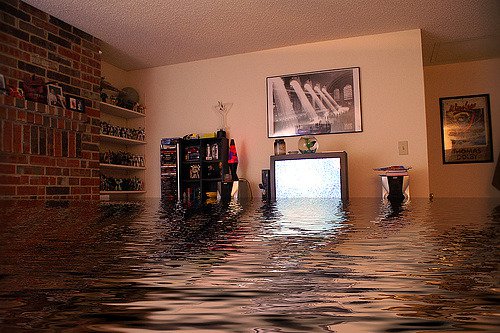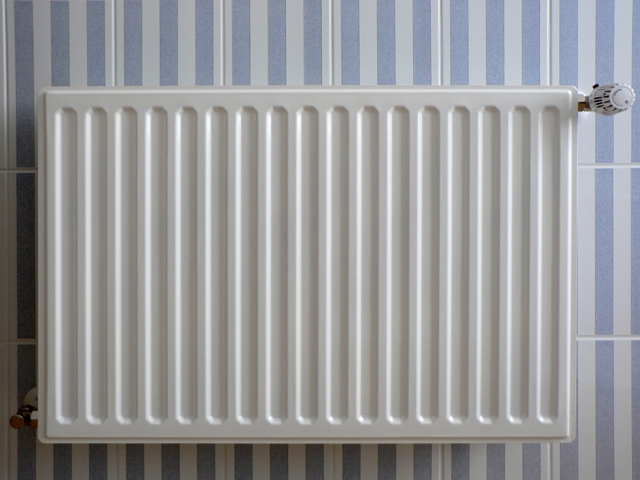How to fix a leak in a heating pipe? What to do if the radiator began to drip between the sections or on the liner? Is it possible to take some measures if the radiator plate ran?
Let's look at some of the most common problems that you can actually fix with your own hands.
Disclaimer
You should probably start with a warning. Most of the operations are carried out by you at your own peril and risk. Still, the correct solution to plumbing problems in an apartment building is a specialist call.
It is not a matter of a higher level of his qualifications: just this, unfortunately, is not a universal rule. You see, for a number of repairs, you will have to reset the heating risers. After the risers in the apartments have cooled down, at any moment any person who has descended into the basement can start them.
Imagine that this will happen with the radiator dismantled. Hot dirty water will hardly decorate your apartment.
If the heating is turned off officially, with the notification of the dispatcher of the local housing and communal services, any person who calls there will receive information that work is underway at your address, which is planned to be completed by a certain date.
Tip: if you still decide to turn off the risers yourself, do not be too lazy to hang a sign made of cardboard or thick paper on the valve asking you not to turn on the heating until the work is completed.

If someone opens the valve, it will definitely not please you.
Typical malfunctions
Pipe leak in a section without a thread
Given: a heating pipe is flowing in a straight section or outlet. There is no opportunity to wait for representatives of the housing and communal services; welding is not available.
Reason: according to the production method, water and gas pipes are electrowelded. It is a poor-quality weld that is destroyed by corrosion in the first place. Where it is thin, it breaks there ...
Elimination:
- Obtain a factory-made clamp from any plumbing store that is designed specifically for sealing leaks.
It is disassembled and put on the pipe so that the rubber gasket falls on the place of the leak, and is pulled together with bolts on it.
Attention: if paint streaks are visible in the place of the leak, clean them carefully with a knife. Be prepared for the fact that this will increase the flow somewhat.
- The problem will also be solved by an aluminum clamp designed for tightening hoses on fittings. An impromptu gasket made of thick dense rubber is placed under it at the site of the leak; then the clamp is clamped with a screwdriver. The price of a collar does not exceed 5-15 rubles, depending on the diameter.

- If it is not possible to visit the store, thick copper or annealed steel wire can be used instead of a collar. Folded in half, it draws the gasket to the leak and twists first by hand, then with pliers.
Leaking thread on radiator hose

The problem with plate radiators is thin walls. Sooner or later, fistulas appear in them.
What to do if there is no opportunity to replace the plate for some reason?
Cold welding will help - a two-component epoxy adhesive with the addition of small steel chips.
- Discard the heating risers.
- Clean the leak from paint, rust and degrease with gasoline or acetone.
- Apply glue. Instructions for how it mixes are always on the package. Try to capture an area of at least 3-4 square centimeters.
- Wait for a time guaranteed to be sufficient for curing (usually about half an hour).
- Run risers and bleed air.
Radiator leak between sections
This problem manifests itself when the temperature of the coolant decreases. In general, if the leak is small, you can wait for frosts: the temperature of the battery will rise, and the expanded sections will again squeeze the gasket that has lost its elasticity.
However, you can take care of eliminating the leak.
- Discard the heating risers.
- Disconnect the radiator from the supply and remove it.
Tip: Substitute the basin when you disconnect the eyeliners. Water will inevitably hang in a certain amount in the riser.
- Measure the distance from the nearest end of the heater to the leak and run a radiator key into it - a thick steel bar flattened at the end. You need to hook the problem nipple. Please note: the directions in which the nipples are unscrewed and twisted depend on the side from which you inserted the key. Do not be too lazy to study the threads on the end sections.
- Tighten the nipple along the thread until it stops. Do not be afraid to damage it: great efforts are permissible when assembling the radiator.

- Having wrapped the deaf (farthest from the liner) plugs, connect the heater to the riser and start it. Don't forget to bleed air.
Conclusion
Admittedly, some of these jobs will seem difficult to you. In the video at the end of the article, several simple repair operations are clearly shown. We hope that after a visual acquaintance with the upcoming work, it will cease to scare you.
Good luck with the repair!
